Manufacturers offer a huge selection of polystyrene tiles for ceiling decoration. Whichever you choose for installation, be sure to check its quality when buying:
- The density of the material should be uniform across the surface;
- The edges of each of the tiles should be smooth, without chips;
- Drawing (or relief, if any) should not have defects;
- Ceiling tiles should not vary in color tone.
Materials and tools necessary for mounting tiles on the ceiling
Materials:
-
 ceiling tile,
ceiling tile, - glue,
- primer,
- putty.
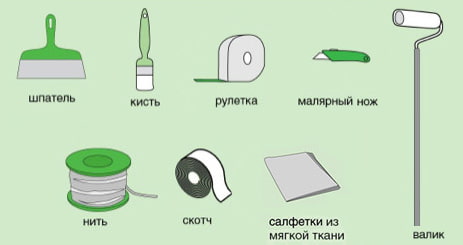 Instruments:
Instruments:
- metal spatula
- brush,
- roulette,
- rope or strong thread,
- masking tape
- paint knife
- roller
- cloth napkins.
Preparation for gluing ceiling tiles
Before you start mounting the tiles on the ceiling, prepare the surface on which you will mount it. Since the weight of each ceiling tile is very small, it does not require strong adhesion to the surface of the ceiling. But if there is whitewash left on it, it is better to eliminate its residues, otherwise the tile may fly off over time. Too large irregularities are also best removed. This is done in the following order:
- Clean off the rest of the whitewash or other coating with a metal spatula;
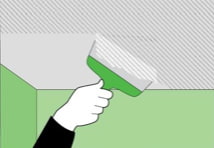
- With it, apply a thin layer of filler material to the cleaned surface, let it dry;
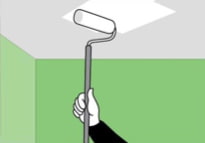
- Using a brush, apply a primer over the putty. Usually, PVA glue diluted to the desired consistency is used.

Drawing a marking before installation of a ceiling tile
There are two ways to lay tiles on the ceiling:
- parallel to the walls
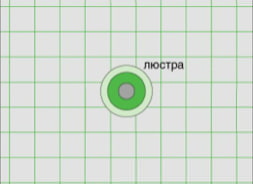
- diagonally to them.
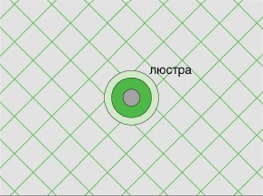
In the first method, the edges of the tiles are parallel to the walls, in the second - at an angle. Which gluing method to choose depends on the size of the room, its geometry, as well as the type of ceiling covering. If the room is long and narrow, it is better to choose a diagonal laying direction, this technique will allow you to visually slightly change the unfortunate proportions.
Tip: If the room is large, the diagonal arrangement of the tile will look more advantageous than the parallel one. In large square rooms, you can use both methods.
Installation of tiles on the ceiling can also be done in different ways:
- from the chandelier (from the center of the ceiling),
- from the corner of the room.
Diagonal laying, as a rule, starts from the center, and parallel can be done in both ways. Both the layout and the installation of ceiling tiles in both versions are slightly different.
Mounting tiles on the ceiling from the center
For marking in the center of the ceiling, we draw 2 lines perpendicular to each other, each of which is parallel to the wall. This can be done with threads and tape. Thus, on the markup, 4 right angles are joined at one point.

For the diagonal way of gluing the ceiling tiles, the right angles must be divided in half (45 degrees), and lay out the marking lines along their diagonals. This is done if the room has a square shape.

If its shape is closer to rectangular, the markup for the diagonal installation of ceiling tiles is carried out as follows:
- We connect the corners of the room with diagonals;
- Through the intersection point we draw 2 lines parallel to the walls;
- The resulting 4 right angles are divided by diagonals and draw marking lines along them.
When gluing ceiling tiles, glue is applied to each of the tiles immediately before installation, this does not need to be done in advance. Having applied glue, the ceiling tile is pressed tightly to the surface, held for several minutes, then released and set about applying glue to the next tile.
The procedure for gluing:
-
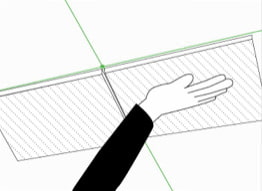 The corner of the first tile when gluing the tiles to the ceiling is laid exactly in the center, and then the markings are followed.
The corner of the first tile when gluing the tiles to the ceiling is laid exactly in the center, and then the markings are followed. - The first four tiles on the ceiling are laid out in marked squares, trying to do this as accurately as possible.
- Tiles in the corners and near the walls are cut to size using a paint knife.
- The cracks formed at the joints are filled with acrylic sealant.
Mounting ceiling tiles from the corner
The marking of the ceiling in this case begins from the corner of the room, which is called the "base". This is usually the angle that is best seen at the entrance. One of the walls of this corner is also called the "base", usually a longer wall (in a rectangular room).
For marking in both corners of the base wall, we retreat from it by the size of the tile plus one centimeter for the gap and put marks there. Between the marks we stretch the thread and fix it with tape. Thus, we get a guide line marking, along which we begin the installation. Sticking is carried out not from the first, but from the second tile, since the first is fixed with adhesive tape, which interferes with the work.
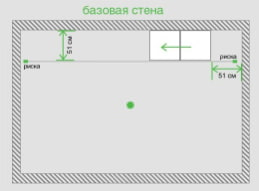
Important: When installing ceiling tiles, do not neglect the layout! Absolutely straight walls do not exist, in the middle of the work you may find yourself in a situation where nothing can already be fixed: a wide gap forms between the tiles and the wall.
The procedure for gluing:
- Apply glue to the tile (just apply a small amount of glue to the center of the ceiling tile and to its corners);
- Put the tile in place, press and hold for a few minutes;
- If during installation the glue protrudes beyond the edges, remove it immediately with a soft clean cloth;
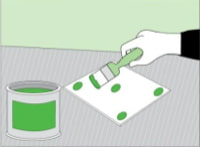
- Glue the ceiling tiles in successive rows;
- Cut the tiles in the last row to the size with a paint knife;
- If during installation between the tiles on the ceiling small cracks have formed, cover them with sealant.


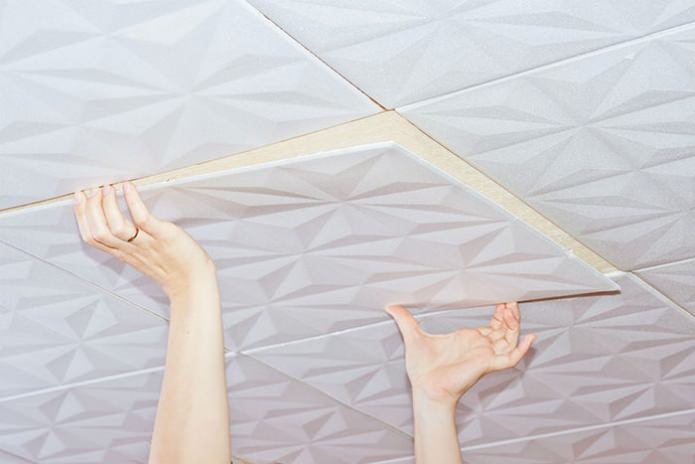


 How to glue the ceiling plinth to the stretch ceiling?
How to glue the ceiling plinth to the stretch ceiling? Ceiling plinth for stretch ceiling: types, recommendations for selection
Ceiling plinth for stretch ceiling: types, recommendations for selection How to choose a screwdriver for home?
How to choose a screwdriver for home?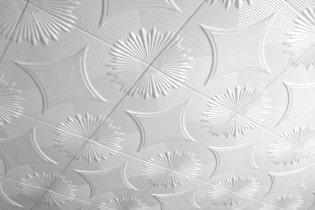 Foam tile for the ceiling: the pros and cons, the stages of gluing
Foam tile for the ceiling: the pros and cons, the stages of gluing Repair in practice: how to repaint furniture yourself
Repair in practice: how to repaint furniture yourself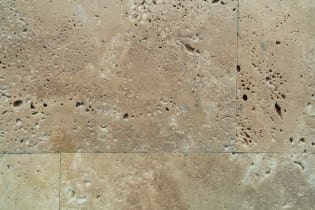 Stone travertine in decoration and construction
Stone travertine in decoration and construction